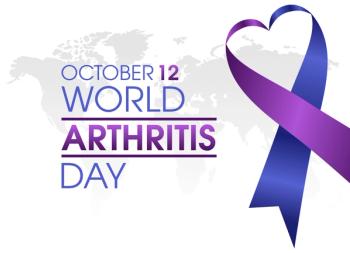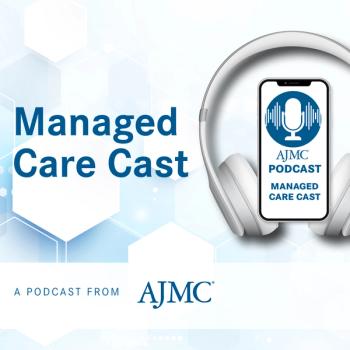It’s no secret health care has a massive data problem. Many point the finger at data collection, but that is simply not the case. With more than 500 electronic health record (EHR) systems to choose from and hospitals using an average of 16 distinct EHR platforms throughout their network, 1 or a combination of many EHRs should check the boxes needed for data collection. However, collectively we have failed to pinpoint and solve for what EHRs lack, what they are not designed to do, and the true crux of health care’s data problem: sharing data.
Treasure troves of data and communications that could be used to move patients along their health journeys in a faster and more efficient manner are currently stuck in EHR silos. If we really want to solve health care's data problem, it’s time for a new way of using data and tech to solve problems by adopting solutions that help connect these data silos. Leveraging the right data at the right time provides the necessary context that organizations and providers need to ultimately improve overall patient outcomes and the time it takes for patients to receive quality care.
Data Deficits and Referral Processing
The medical referral process has long been a thorn in the side of both primary care providers (PCPs) and specialists. Problems stem from poor, if any, communication between care coordination teams via antiquated fax technology that results in inadequate tracking of referrals—a lack of connectivity and usable data. In contrast, the shift from paper-based to digital processes has revolutionized communication and data-sharing in the business world. Digital documents are easier to manage and harder to lose. In offices where the transition hasn’t occurred, the typical office worker spends an estimated 30% to 40% of their day searching for printed documents.
In today’s world, an important pillar of an efficient health care ecosystem is digital connection. It provides improved communication and care coordination across a network, the ability to help all clinicians understand the patient’s unique care plan, and helps patients navigate to the next appropriate care setting. Researchers note that up to 50% of referring physicians do not know whether their patients were seen by the specialist to which they were referred. This care visibility gap among referring physicians poses an especially critical challenge to PCPs in a value-based care system, as they are entrusted with being an advocate of the patients’ health and longevity.
Poor communication is the root of the problem in the traditional referral system. An analysis of referral process studies and literature highlighted that up to 45% of referrals resulted in no communication from the specialist back to the referring provider. Further, approximately a quarter of US patients reported that the results and records from one provider did not reach another provider in time for their appointment. Additionally, poor referral tracking leads to a host of problems, including care delays, low patient satisfaction, and malpractice lawsuits. Ultimately, this lack of modern care coordination means countless patients fall through the cracks every day.
Referral to response ratio: The percentage of referrals that have been confirmed as received in relation to the total number of referrals sent
Average hours to response: The average time measured in hours from when a referral is sent to when a confirmation response is received
Referral to appointment ratio: the percentage of patients who scheduled an appointment in relation to the total number of referrals
Average days to scheduled: The average time measured in days from the date the referral was sent to the date the appointment was scheduled
Average days to appointment: The average time measured in days from the date the referral was sent to the date of the scheduled appointment
Understandably, physicians have expressed frustration with the inadequacies of the referral system. In a recent survey on physician attitudes at an academic tertiary care medical center, 63% of responding PCPs and 35% of specialists reported dissatisfaction with the managed care referral system. They too identified the lack of communication between them as the main pain point with the referral process. Half of PCPs were dissatisfied with the timeliness of feedback from specialists, amd 48% of specialists were dissatisfied with the timeliness of information from PCPs. In addition, 68% of specialists reported they did not receive information before the referral visit and PCPs reported they only received follow-ups from specialists within 7 days of the visit 36% of the time. Four weeks after the referral visit, 25% of PCPs had still not received appropriate information from specialists.
Low conversion rates of referrals actually getting scheduled as appointments are an obvious result of this dysfunction. A study of a large primary care network analyzed over 100,000 referral scheduling attempts over the course of a year and found less than 35% resulted in documented complete appointments.
What Is the Solution to Patients Getting Lost in the System?
For value-based care organizations, data comprise the most essential currency to flow among patients, PCPs, and specialists. Without data, organizations leak patients and revenue on a damaging macro scale, and on an individual level, patients aren’t connected with critical care in a timely fashion, get frustrated with the system, often give up before ever getting the medical answers they need, and ultimately suffer from worse health outcomes. A clear example of this can be found when high-risk patients are discharged from the hospital and require additional follow-up care. If they are not immediately contacted and scheduled for that all-important referral—an action that fails to be completed alarmingly often—high-risk patients are more likely to end up in the emergency department, resulting in high costs that could have been avoided.
With more of the burden and risk of negative outcomes shifting to providers, health systems need to find better ways to manage patient referrals efficiently and effectively, and in a timely manner. A technology-based solution makes referrals more convenient and accessible, allows the seamless sharing of information across care teams and patients, engages all parties of care including patients, and uses data to lead to changed behaviors for better results.
Technology, which isn’t likely to fully replace patient-provider interaction, is our biggest asset in consolidating the referral process with a platform that unites all affected teams. Tech-driven connectivity and collaboration tools empower primary care providers to shepherd patient care, while simultaneously empowering patients to make more informed and strategic decisions about their own health and care journey. By adopting collaborative tools that empower providers, the emphasis is where it should be: on patient health and positive patient health care journeys.


















































